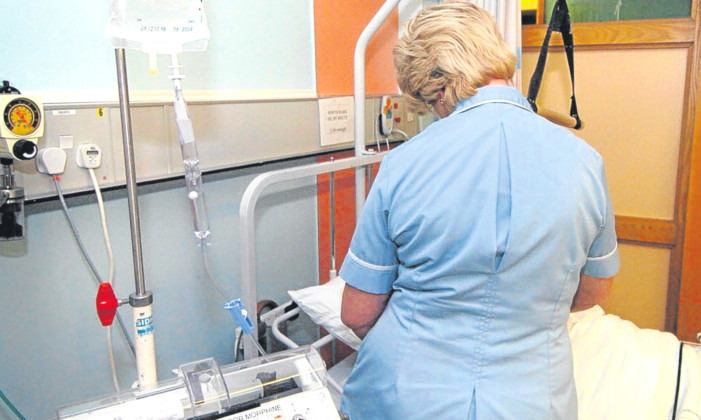
Action urged to plug 20,000 staffing shortfall.
Soaring numbers of foreign nurses are being brought on to wards in the UK to plug a “care crisis” engulfing the NHS.
Campaigners have warned hospitals are “dangerously under-staffed”, leaving patients facing neglect and poor treatment.
Shocking new figures have revealed the number of foreign nurses who registered to work in the UK has soared by 70% during the last four years.
But experts branded the move short-sighted and claimed drastic action was needed to plug an estimated shortfall of 20,000 nurses across England.
Tom Sandford, director of the Royal College of Nursing (RCN) in England, said: “For too long, the quality of patient care in the NHS has been undermined by inadequate staffing levels and short-term workforce planning.
“NHS trusts have been looking to save money by cutting posts or leaving them vacant. Last year, there were 20,000 nursing vacancies in England and the RCN warned of an NHS workforce crisis.
“Trusts starting to recognise the importance of sufficient staffing is a step in the right direction, but the fact that they are having to go abroad to find nurses underlines the continuing poor state of workforce planning.
“A lack of UK-trained nurses and inadequate support for those already in the profession has seen the NHS having to raid overseas workforces which is not a viable long-term solution.”
Figures released through a parliamentary question by shadow health minister Jamie Reed revealed that, in 2009/10, 2,520 foreign nurses were registered to work in the UK, but by 2012/13 it had soared to 4,305. Since 2002 more than 79,000
foreign nurses have poured into the UK, equivalent to the entire population of Hyndburn in Lancashire.
The revelations come days after a shock nursing survey by Unison revealed 66% of nurses do not have enough time with patients and, of those, 55% said that care was left undone.
Among the other findings, contained in the Running on Empty report, was that 48% of the respondents claimed their organisation was at risk of a Mid-Staffordshire hospitals scandal, in which the trust went into administration this year after services were deemed “unsustainable” by watchdog Monitor.
Trevor Johnston, Unison’s head of health in the north, said it was wrong to deprive poorer countries of skilled nurses to plug a crisis which had been developing for a decade. He said: “It has been long known there is a tip-off point where a
significant number of experienced NHS nurses who qualified 30 years ago are retiring.”
Labour claims that since 2010 there are 5,000 fewer full-time nurses across England, and Mr Johnston warned that the pressure the remaining staff faced made it an unappealing career choice.
He added: “People are not coming into the profession, firstly because the training is not paid, secondly because the pay is not good and the pressure of nursing is made greater because of the staffing levels and what’s expected of them.”
A spokesman for the Health Department said: “Nurses are crucial to patient safety and experience. There are 4,200 more nurses on our wards than in 2010 and 1,000 extra adult nursing training places are being created this year.
“Nurses from abroad make a valuable contribution to patient care and recruiting from abroad is nothing new, but they should only work in the NHS if they have proven their competence and language skills.
“Trusts who cannot recruit enough staff locally may opt to recruit qualified nurses from further afield.”

Enjoy the convenience of having The Sunday Post delivered as a digital ePaper straight to your smartphone, tablet or computer.
Subscribe for only £5.49 a month and enjoy all the benefits of the printed paper as a digital replica.
Subscribe